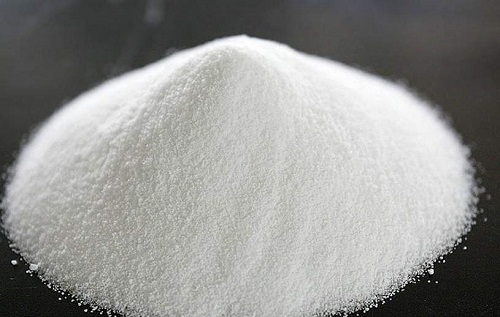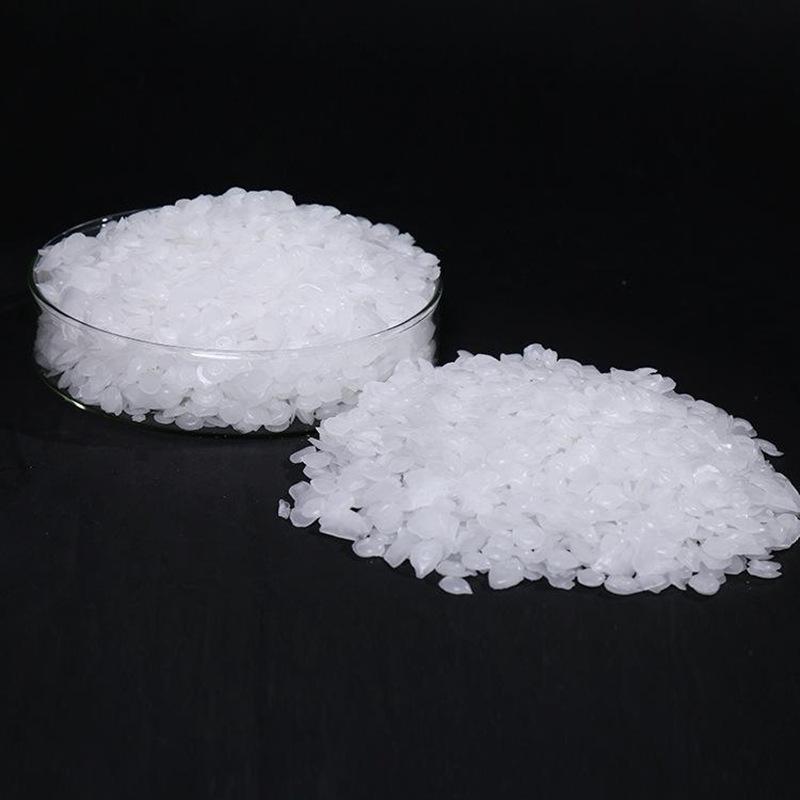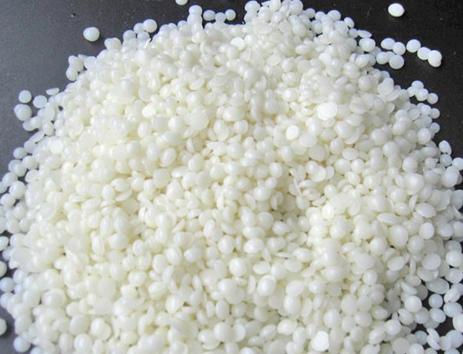Stearic acid

Stearic acid, or octadecanoic acid, is produced by hydrolysis of oils and is mainly used to produce stearate. The melting point is 69.6°C and it is a main component of animal and vegetable oils and fats.
Shape: The pure product is white and slightly shiny waxy small crystals.
Melting point: 71.5-72℃69.6℃
Boiling point: 232℃ (2.0kPa)
Flash point: 220.6℃
Autoignition point: 444.3℃
Stability: decomposes at 360℃ (other data says 376.1℃ )
Toxicity: non-toxic
Solubility: Insoluble in water (at 20°C, only 0.00029g is dissolved in 100 ml of water). Slightly soluble in cold ethanol. Soluble in acetone, benzene, ether, chloroform, carbon tetrachloride, sulfur dioxide, chloroform, hot ethanol, toluene, amyl acetate, etc.
Others: Volatilize slowly at 90-100℃. It has the chemical properties of general organic carboxylic acids.
Stearic acid is widely used in the manufacturing of PVC plastic pipes, plates, profiles, and films. It is a PVC heat stabilizer with good lubricity and good light and heat stabilization. In plastic PVC pipes, stearic acid helps prevent “scorching” during processing. It is an effective heat stabilizer added in PVC film processing and can prevent the finished film from being exposed to sulfides. Discoloration.
PE wax

PE wax is polyethylene wax (PE-WAX), an ultra-low molecular weight polyethylene.
Polyethylene wax is generally divided into four types: oligomer wax, cracked wax, polymer wax and blended wax. The oligomer wax is generally produced in China. Waxes, other cracked waxes, polymerized waxes and blended waxes are mainly produced abroad. The performance of polymerized wax is theoretically better than that of cracked wax. The specific use depends on the compatibility of the product. It is generally used to improve the fluidity of polyolefin plastics, improve the dispersion of fillers and additives, and is also used as an internal lubricant for rubber and plastic materials.
Main features:
Low viscosity, softening High point, good hardness and other properties, non-toxic, good thermal stability, low high temperature volatility, excellent external lubrication and strong internal lubrication for pigment dispersion, which can improve the efficiency of plastic processing Production efficiency, good moisture resistance at normal temperature, strong chemical resistance, excellent electrical properties, which can improve the appearance of the finished product.
Scope of application:
Due to the It has excellent external lubrication and strong internal lubrication, and has good compatibility with resins such as polyethylene, polyvinyl chloride, and polypropylene. It can be used as a lubricant in extrusion, calendering, and injection processing. It can improve processing efficiency, prevent and overcome the adhesion of films, pipes, and sheets, improve the smoothness and gloss of finished products, and improve the appearance of finished products.
As a concentrated color masterbatch dispersant for a variety of thermoplastic resins and a lubricating and dispersing agent for filled masterbatch and degradable masterbatch, it can improve HDPE, Processing properties, surface gloss, lubricity and thermal stability of PP and PVC.
Used as a lubricant for cable insulation materials, it can enhance the diffusion of fillers, increase the extrusion rate, increase the mold flow rate, and facilitate demoulding. convenient.
Good light resistance and chemical properties, can be used as a carrier for pigments, can improve the wear resistance of paints and inks, and improve the dispersion of pigments and fillers , to prevent pigments from sinking to the bottom, and can be used as a flattening agent for paints and inks.
Can be added to various paraffin waxes to improve their performance. Excellent electrical insulator properties, added to insulating oil, paraffin or microcrystalline paraffin to increase the softening temperature, viscosity and insulation properties, and can be used for cable insulation, moisture-proof coating of capacitors and transformer windings.
Can be widely used in the manufacture of masterbatch, granulation, plastic steel, PVC pipes, hot melt adhesive, rubber, shoe polish, leather brightener, Cable insulation materials, floor wax, plastic profiles, inks, injection molding and other products.
Paraffin

Paraffin is a strange wax extracted from petroleum, shale oil or other asphalt mineral oils. It is white or light yellow. Translucent material with a fairly obvious crystal structure.
English name: paraffinwax
Paraffin wax is a kind of mineral wax and a kind of petroleum wax; it is the lubricating oil fraction obtained from crude oil distillation through solvent refining, solvent dewaxing or Wax is freeze-crystallized and dewaxed by pressing to obtain wax paste, which is then solvent-deoiled and refined to obtain flaky or needle-shaped crystals, also known as crystalline wax. The main quality indicators are melting point and oil content. The former indicates temperature resistance and the latter indicates purity.
Mainly used as components and packaging materials for food and other commodities (such as wax paper, crayons, candles, carbon paper), coating materials for baking containers, and cosmetic raw materials. It is used for fruit preservation, improving the aging resistance and flexibility of rubber, insulating electrical components, precision casting, etc. It can also be used for oxidation to generate synthetic fatty acids.
Classification and usage
Liquid paraffin, commonly known as white oil, is a colorless and transparent liquid that can be used as a transparent internal lubricant for PVC. The dosage is about 0.5 parts.
Solid paraffin, also known as natural paraffin, is a white solid that can be used as an external lubricant for PVC. The dosage is 0.1~1.0 parts. Too much dosage will affect the transparency.
Microcrystalline paraffin, also known as high melting point paraffin, appears as a white or light yellow solid. It is called microcrystalline paraffin because of its fine crystallization. The lubrication effect and thermal stability are better than other paraffins. The dosage in PVC is smaller, generally 0.1~0.2 parts.
Chlorinated paraffin has good compatibility with PVC but poor transparency. It has good effect when used together with other lubricants. The dosage is less than 0.3.

 微信扫一扫打赏
微信扫一扫打赏

